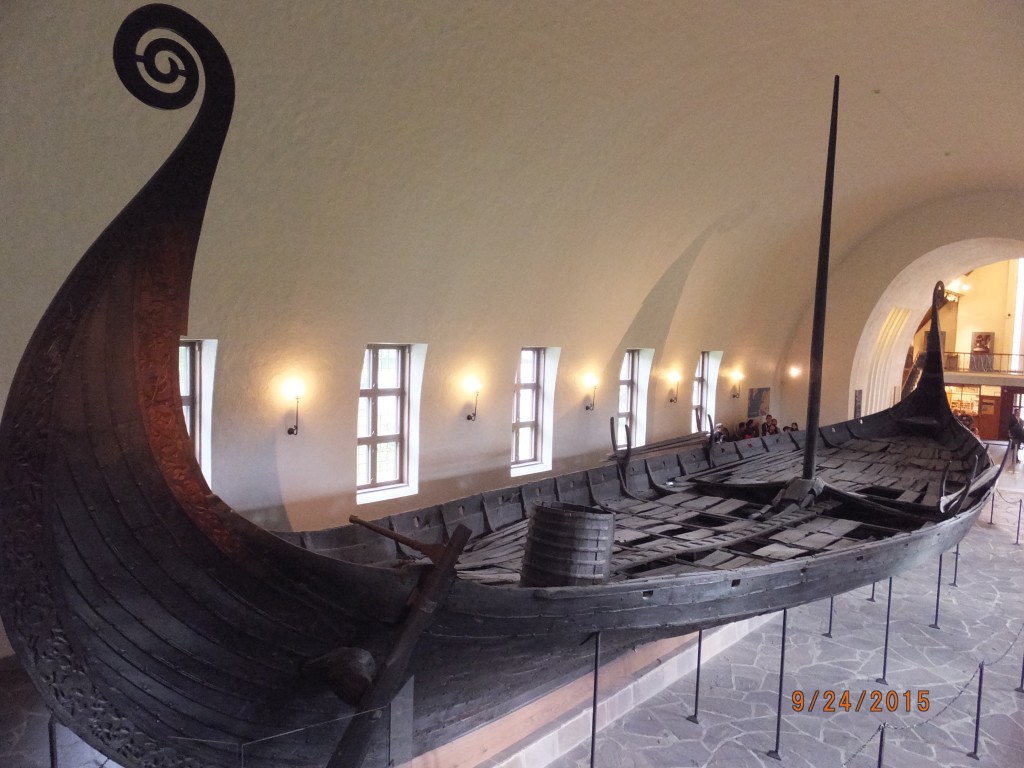Oslo is fortunate to have some of the most complete Viking ships on display. These ships were uncovered in the mid eighteenth century from ancient burial mounds. The ground conditions in these burial mounds were kind enough to preserve them for over 1,000 years. The Vikings believed that the dead could be given objects to take with them into the afterlife. What better object to send than a whole ship? For me the most fascinating aspect was how low to the water these ships would have been, resting roughly 12 -16 inches or so above the waterline. I also admired their strategic innovations such as the collapsible mast. Vikings seemed to value the element of surprise and it is believed as they approached land they would take down their sail and mast to avoid detection from land, aided by how low to the water the ships rested. I was surprised to learn they do not have anywhere to sit. The idea is that they likely loaded their personal wooden chests onboard in rows to provide seating for rowing.
Norwegians take great pride in their place in polar exploration. The polar ship Fram, which means “forward” in Norwegian, holds the record for going both the furthest North and the furthest South than any other wooden ship. It is on display at the Fram Museum. Yes, it is entirely made of wood and specifically designed with a rounder than normal ship hull to help it “rise” with the ice when it gets frozen as opposed to getting crushed by the ice. It was also the first commercial ship to be powered by a diesel engine, which was specifically done to save on space and weight. Nearby is the Gjoa, the first ship to complete the Northwest Passage. On some of their most notable explorations, they were under the command of Roald Amundsen, a Norwegian and the first person to reach the South Pole.
Another nautical aspect the Norwegians can lay a claim to fame is adding to the knowledge of ancient raft designs and their navigational possibilities. Thor Heyerdahl, a Norwegian ethnographer, noticed commonalities between the people of South America and Polynesia. The belief had always been those who had come from the west settled Polynesia. Scholars thought it impossible for anyone to manage a successful sailing from South America. No one took Heyerdahl seriously that it was feasible South Americans could have sailed to Polynesia. In order to prove his theory, he determined he must use ancient raft building techniques and materials to construct a raft and then actually sail from South America to Polynesia. He was successful to this end and the original raft, Kon-TIki, is on display along with the Ra II, a raft he built to sail from Africa to the Caribbean to prove a similar premise.
// Oliver – Day 12 – Norway



